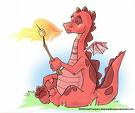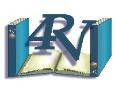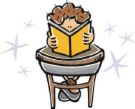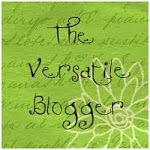Every folk group has special traditions with regard to magical practice. To the contrary of trends in modern "occultism" these traditions are not merely window dressing on a universal pattern- the differences reflect real and often profound variations between and among traditions.
In studying the Celtic traditions of magic certain unique themes occur which are worth pointing out. These themes help distinguish the Celtic traditions from others. If these themes are found inspiring, then the Celtic tradition is a place to explore them further in the environment of ideas which will lead the seeker to deeper findings along the same path.
To the Celtic people, magic was a part of life. It was as common as walking or breathing. It encompassed all parts of life and nature.
They saw magic as any thought, act or ritual that influenced change in the energies that surround us. An example of this is creating a blessing on a crop to increase a harvest.
Rituals formed a lot of Celtic magic. It was believed to open doors to the subconscious and creative mind allowing magical energy to flow through. Any outcome was considered a magical response.
They saw magic as any thought, act or ritual that influenced change in the energies that surround us. An example of this is creating a blessing on a crop to increase a harvest.
Rituals formed a lot of Celtic magic. It was believed to open doors to the subconscious and creative mind allowing magical energy to flow through. Any outcome was considered a magical response.
In Celtic society gods, deities and elementals were intertwined. Each of these elements in combination with rituals helped to connect to the energy needed for magic.
1. Magic of the Head
NO other tradition, with the possible exception of the Slavic, is more focused on the human head (and brain) as the seat of magical powers. When one reads the ancient Irish tales one becomes aware of the degree to which the Celts were head hunters. The reason for this is that their magical physiology holds that the head is the seat of power- an honor. Hence the ancient Irish were known to eat a portion of a slain enemy's brain. The head-hunting practices of Irish fighters continued until the mid-19th century, when early Irish immigrants to North America fighting for the Confederacy were known to have hunted the heads of Union soldiers. This is without doubt also the ultimate origin of the "jack-o-lantern" the carved gourd familiar in Halloween customs. It is thought by many that the myth of the head of Mimir, which informs the God Odin, is ultimately a Celtic influence.
2. Memory
Mimir means memory- and the exercise of memory in and of itself seems to have a magical importance for the Celts. This is a trait they share with the Aryans of the east. The Druidic training program is said to have consisted of twenty years of learning lore by memory. The exercise of this faculty for its own sake, beyond the ready access to information it provides to the subject is something the Celts seem to have especially appreciated. the ogham system was most certainly one of the practical tools used in this exercise. Poems and stories were among the things memorized.
3. Story-Telling
The stories recited by Celtic tellers of tales were not merely for entertainment- they were also not merely mythic tales in which the traditions of the people were encoded. Stories are actually said to have operative magical effects. It might be said that the hearing of a certain story would bring a number of years of good fortune, but the telling of a story would bring even more. (See Rees and Rees, The Celtic Heritage.)
4. Language and Music
No people seem more Iyrical than the Celts. The linkage between music (harmonics) and language (meaning) is strong. In the lore of magic this reaches its apex in operative techniques by which changes in the environment, or in the human mind, can actually be effected by means of musical strains alone. This is a theory explored by the Pythagoreans, but in the lore of the Celts it appears to have been an ancient traditional operative technique.
5. Inter-Dimensionality
No other traditional lore seems to have a better or more realistic understanding of the magical experience of inter-dimensionality. The regular interaction with the "otherworld" or the "underworld" is a common feature of Irish and Welsh mythic tales as well as folktales from the Celtic cultures. It is from these that the Arthurian legends inherit their "inter-dimensional" features- such as the Grail Castle appearing and disappearing from various "places" at various "times." This mutual effect of one "world" upon another is reflected in the very grammar of the Celtic languages wherein one word, when juxtaposed to another for a specific grarnrnatical, syntactic and semantic purpose, will cause the latter word to change its shape (sound). For example the Irish word for "cow" is bo, and the word for "white" is ban, but to say "a white cow," one must say, or write, bo bhan [pron. boh-vawn].
6. "Satirizing"
By the use of words - of poetry - the fili("master poets") were able to cause physical changes in the bodies of other individuals. This was done with "satire." The fact that satirical verse has a patently humorous aspect is the essentially Celtic dimension here. Because Celtic kings could not rule if they suffered any physical defect or blemish, all the satirists had to do in order to depose a king was to, by means of a satirical verse, raise boils on his face. All would see the blemish, and his rule would be at an end.
7. Operative Fasting
Fasting for "spiritual" reasons is familiar throughout the world. To fast-really to starve the body - in order to make subjective changes is obvious. Celtic magicians could, however, "fast on" their enemies as an operative curse formula. By starving himself to near death the sorcerer can actually cause the death of his enemy. This technique is something entirely different from, though apparently related to, the use of fasting as a way to "protest" supposed injustices. This latter technique works only through the medium of information in the context of public morality, whereas the operative fasting of the ancient Celtic magicians worked in a mysterious way.
8. Magical Taboos
Again "taboos" - negative prohibitions against certain behaviours-- and other behavioural sanctions are familiar in most religious traditions. The Irish gess [pron. gaysh] (plural gessa) is most often translated something like "taboo." It is, however, something quite different from what is usually meant by this word. A gess, although usually a prohibition against behaviour, actually provides power to the individual. The more gessa that have been "put on" a person (usually by a sorcerer) the more danger recipients live with- but also the more power recipients have at their disposal. To have a gess is both a curse and a boon simultaneously.
These eight distinctive points of Celtic magic, being aspects which distinguish that tradition from others, should be focal points of research and practice in any program to develop a true magical renaissance of the Celtic tradition. Celtic magic is deep rooted in the genre of fantasy - its mystery and traditions run deep throughout the ages. It is not uncommon for fantastical works to borrow some of the Celtic traditions to interweave through a storyline giving it a historical reference and anchor.



























3 comments:
Hi Karen, thanks so much for stopping. Glad you are enjoying the blog - love to hear more about your project :)
~Nancy
Nancy, of all the books you've read and reviewed during the past year, do you have a favorite you would recommend (preferably one with no vampires)?
Hi Patricia! I'm sorry - I didn't see this earlier. Favorites...wow, there are some difficult choices. For young adult novel I think I would say "Just Breeze" by Beverly McClure (I will be posting my review of it shortly); for a mid-grade novel I think "Slob" by Ellen Potter; and Fantasy I'm torn between Rick Riordan's "Percy Jackson" series (I've only read the first one so far "The Lightning Thief" and I love his take on the gods of mythology) and T.A. Barron's "Merlin's Dragon". I fell in love with T.A. Barron's series about young Merlin (The Lost Years series) and became a huge fan of this author. Thanks for asking!
~Nancy
Post a Comment